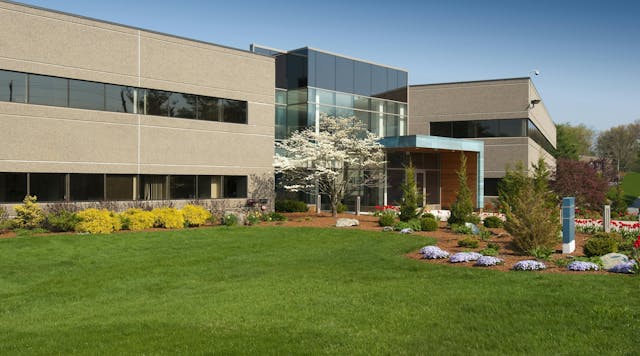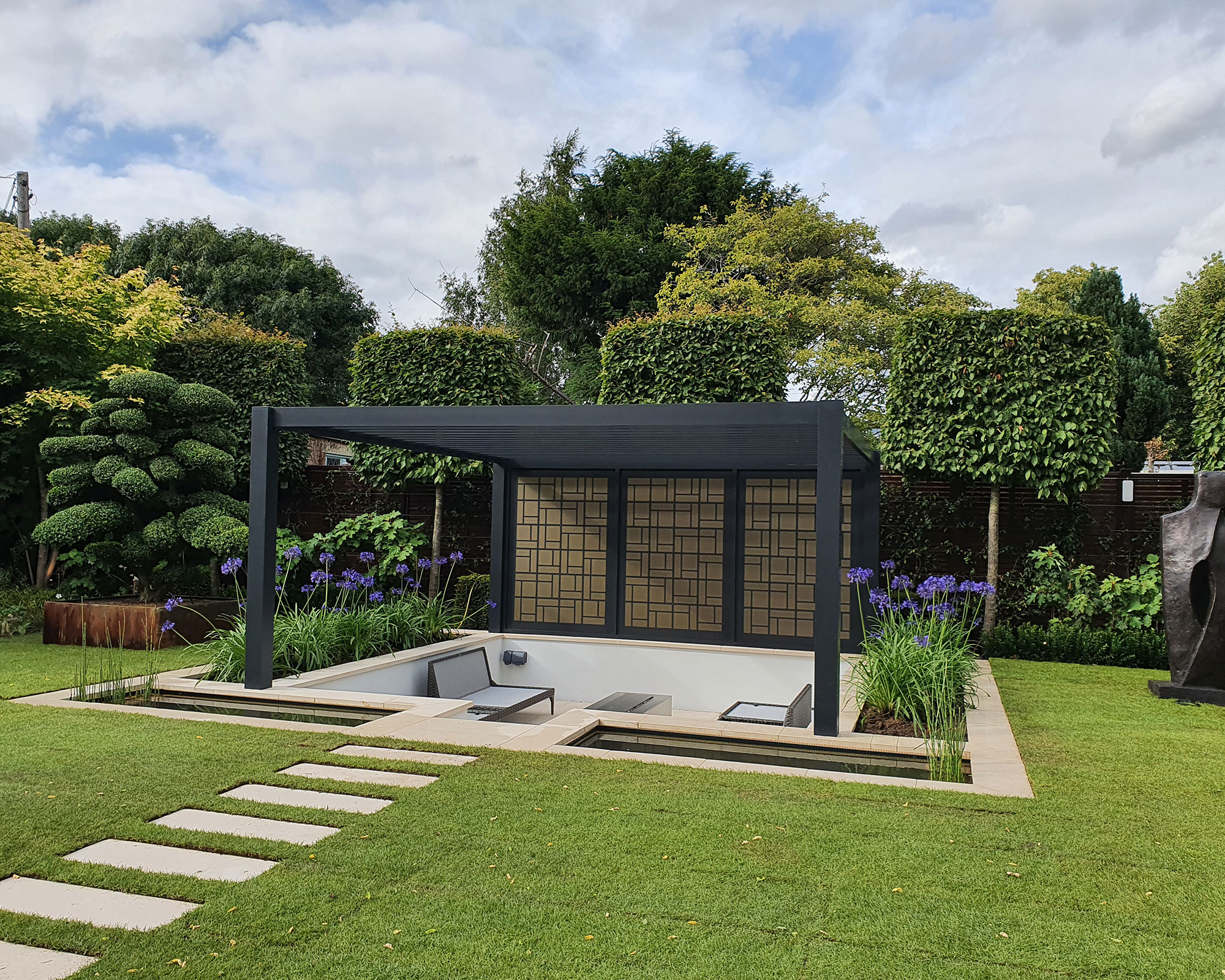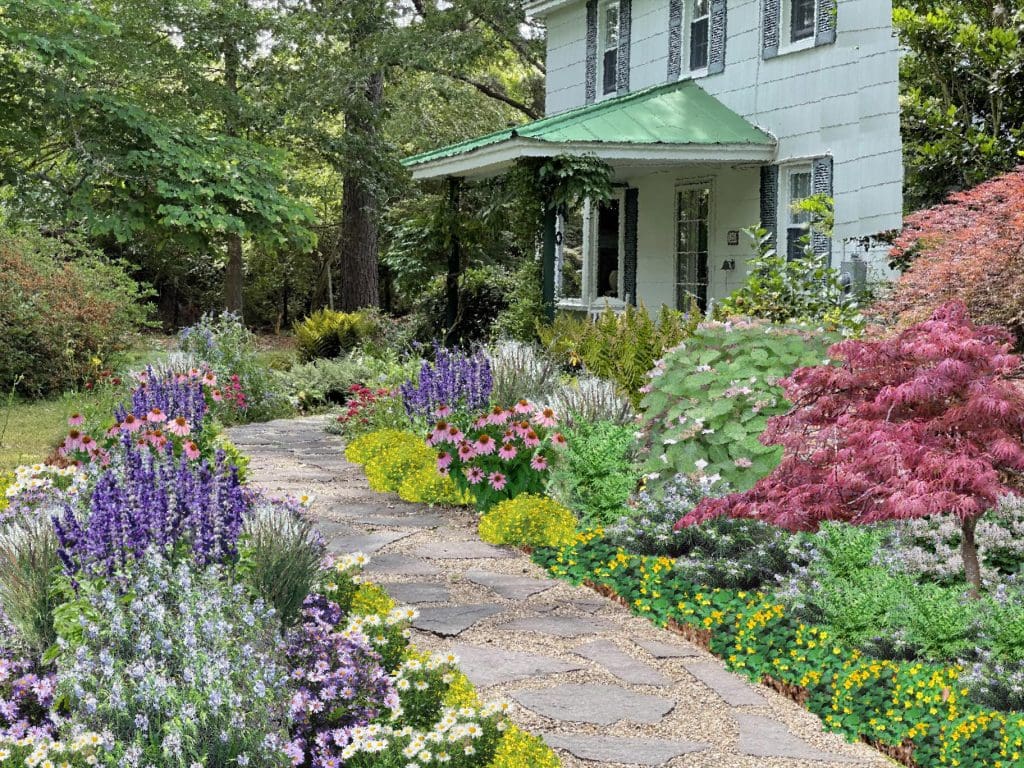Hilton Head Landscapes Fundamentals Explained
Table of ContentsHow Hilton Head Landscapes can Save You Time, Stress, and Money.The smart Trick of Hilton Head Landscapes That Nobody is DiscussingAbout Hilton Head LandscapesThe 45-Second Trick For Hilton Head LandscapesThe Definitive Guide to Hilton Head Landscapes7 Simple Techniques For Hilton Head LandscapesFacts About Hilton Head Landscapes UncoveredSee This Report on Hilton Head Landscapes
Kind compatibility is likewise a major part of unity in designone or 2 strikingly different forms are good for contrast and focus, yet generally all various other types must have some similarities for a merged appearance. Texture describes how rugged or fine the surface of the plant or hardscape product feels and/or looks.
Instances of plants with crude appearance include philodendrons, agaves, bromeliads, hollies, hands, and hydrangeas. Hardscape with crude texture consists of rough-cut stone, rough-finished block, and unfinished timber with knots and a raised grain. Aged or old building product that maintains a weather-beaten surface area is often coarse in texture. Qualities that develop fine structure include little foliage; thin, strappy leaves (yards) or tall, thin stems; small, thick twigs and small branches; long stems (vines); and small, fragile blossoms.
The smart Trick of Hilton Head Landscapes That Nobody is Talking About
Most plants are moderate appearance, because they can not be described as having either rugged or great structure. They are characterized by medium-sized leaves with basic shapes and smooth edges. The average-sized branches are not densely spaced neither widely spaced, and the overall kind is generally rounded or mounding. Medium-textured plants function as a history to web link and combine the rugged- and fine-textured plants.

To make an area really feel smaller, place the crude structures along the external boundary and the fine structures closest to the visitor. The detail of the crude structure makes the plants show up closer and makes the room really feel smaller sized. The viewed structure of plants can additionally alter with the distance from the plant.
The Buzz on Hilton Head Landscapes
Strong shades enhance the comparison and make the texture appear coarser, while low-key shades can squash texture. Hardscape with a rugged texturesuch as extremely rough rocks and vibrant, big timberstends to make all plant material appear extra average textured. Designers often create a structure research study (Figure 8) on paper to help decide the arrangement of plant materials.
Color in plant product and hardscape adds interest and selection to the landscape. Shade is the most noticeable aspect in the landscape and is usually the focus of most property owners; nonetheless, it is also the most short-term element, normally lasting just a couple of weeks a year for private plants.
The Of Hilton Head Landscapes
A basic summary of the shade wheel consists of the 3 primaries of red, blue, and yellow; the three additional shades (a mix of two primaries) of eco-friendly, orange, and violet; and six tertiary shades (a mix of one nearby key and additional color), such as red-orange. Color concept describes the connection of colors to every various other and exactly how they should be utilized in a make-up.

Similar (occasionally called harmonious) shade systems are any three to 5 shades that are surrounding on the shade wheel, such as red, red-orange, orange, yellow-orange, and yellow, or blue, blue-violet, and violet (hilton head landscapers). The colors are related to each various other because they generally consist of two primaries mixed to create a second and 2 tertiary shades, which indicates anonymous they share usual buildings
Complementary colors are often located naturally in blossoms; a typical set is yellow and violet. Color is found in the flowers, foliage, bark, and fruit of plants.
6 Simple Techniques For Hilton Head Landscapes
Environment-friendly vegetation in all its different shades is the leading shade by amount, yet various other colors capture attention quicker because of their high comparison to the shade green. Shade is likewise located in structures, rocks, pavers, timber, and furniture. Many colors in all-natural products, such as rock and wood, are normally low-key and often tend to be variations of brown, tan, and light yellow.
Shades have properties that can impact emotions, spatial perception, light quality, equilibrium, and emphasis. Cool colors have a tendency to be soothing and ought to be used in locations for relaxation and serenity.
The Ultimate Guide To Hilton Head Landscapes
Cool colors tend to decline and are regarded as being further away, making an area feel bigger. Color can likewise be made use of to record interest and direct sights.
As an example, bright yellow, which has the highest possible strength, also has a high comparison with all various other colors (usually referred to as a "pop" of shade) and must be made use of moderately. A percentage of extreme shade has as much visual weight as a huge quantity of a much more restrained or weak color.
Analogous (sometimes called harmonious) color schemes are any 3 to five colors that are surrounding on the color wheel, such as red, red-orange, orange, yellow-orange, and yellow, or blue, blue-violet, and violet. The shades belong to each various other due to the fact that they commonly consist of 2 primary colors blended to create an additional and two tertiary shades, which implies they share usual residential or commercial properties.
The 2-Minute Rule for Hilton Head Landscapes
Complementary colors are frequently discovered normally in blossoms; a common set is yellow and violet. Color is found in the blossoms, foliage, bark, and fruit of plants.
Green vegetation in all its different shades is the leading color by amount, however other shades catch focus a lot more easily as a result of their high comparison to the color eco-friendly - Landscapers near me - https://h1tnhdlndscps.carrd.co. Color is also found in buildings, rocks, pavers, wood, and furniture. Most colors in all-natural products, such as rock and wood, are normally soft and tend to be variants of brownish, tan, and light yellow
All about Hilton Head Landscapes
Colors have homes that can influence feelings, spatial understanding, light top quality, equilibrium, and emphasis. Awesome colors have a tendency to be relaxing and need to be made use of in locations for leisure and tranquility.
Trendy colors tend to recede and are viewed as being farther away, making a room feel bigger. Shade can likewise be utilized to record interest and direct views - https://padlet.com/stevenagonzales/my-delightful-padlet-65fq7sgb974pr3v2.
As an example, brilliant yellow, which has the highest strength, additionally has a high comparison with all other shades (usually explained as a "pop" of color) and need to be conserved. A percentage of extreme color has as much aesthetic weight as a large amount of a more restrained or weak color.